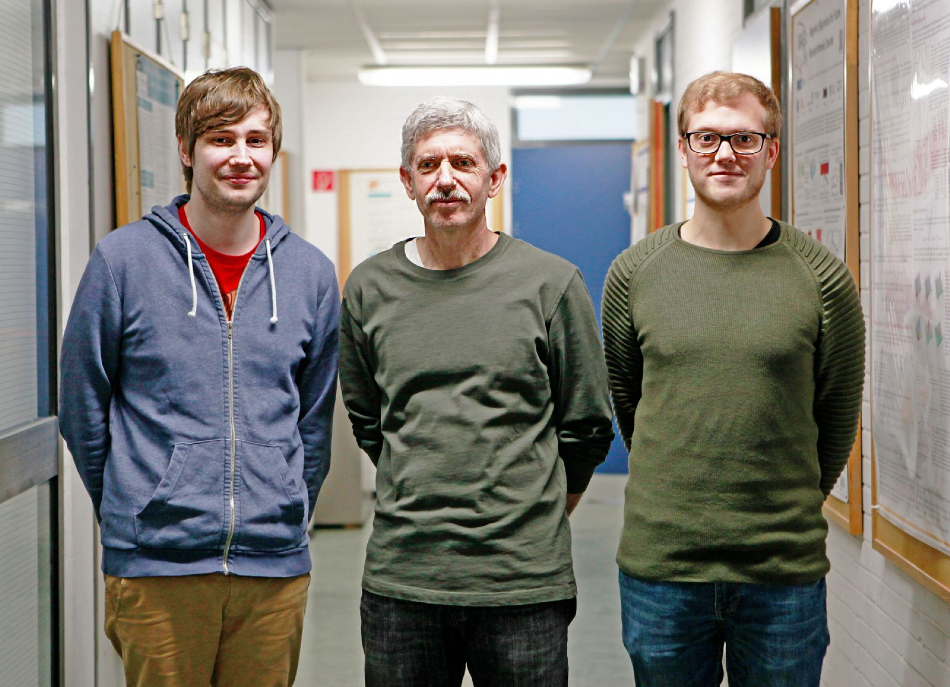Feb 21 2020
The equations of quantum mechanics can be used to accurately predict the behavior of an electron in an atom, or how it moves within a solid. These theoretical calculations are in complete agreement with experimental results.
 Jan-Philip Joost (left), Professor Michael Bonitz and Niclas Schlünzen succeeded in developing a simulation method, which enables quantum mechanical calculations up to around 10,000 times faster than previously possible. Image Credit: © Julia Siekmann, Kiel University.
Jan-Philip Joost (left), Professor Michael Bonitz and Niclas Schlünzen succeeded in developing a simulation method, which enables quantum mechanical calculations up to around 10,000 times faster than previously possible. Image Credit: © Julia Siekmann, Kiel University.
However, at present, it is not feasible to characterize complex quantum systems that consist of several electrons or elementary particles—such as molecules, atomic nuclei, or solids—even using the most robust existing computers. The fundamental mathematical equations are highly complex, and the computational needs are extremely huge.
Led by Professor Michael Bonitz from the Institute of Theoretical Physics and Astrophysics at Kiel University (CAU), a research team has now successfully developed a simulation technique that allows quantum mechanical calculations up to around 10,000 times faster than what was possible until now. The study results have been reported in the latest issue of Physical Review Letters, a renowned scientific journal.
Quantum Simulations Take too Long, Even with Extremely Powerful Computers
The new technique developed by the Kiel team is founded on one of the most robust and universal simulation methods currently in use for quantum mechanical many-body systems. The technique involves using the so-called nonequilibrium Green functions method: this enables highly precise characterization of complex interactions and movements of electrons, even for a longer period.
But, until now, this method has been highly computer-intensive: a computer needs 1000 times more processing time to predict the development of the quantum system over a 10 times longer period.
The physicists at the CAU used the mathematical trick of introducing an additional auxiliary variable, thereby successfully reformulating the basic nonequilibrium Green functions equations to make the calculation time to increase only linearly along with the process duration.
Through this technique, only 10 times more computing time is required for a 10 times longer prediction period. When compared to the methods used earlier, the physicists realized an acceleration factor of roughly 10,000. There will be a further increase in this factor for longer processes. The new approach has been named “G1-G2 method” as it integrates two Green functions for the first time.
Temporal Development of Material Properties Predictable for the First Time
The Kiel researchers’ new calculation model not just saves costly computing time, but also enables simulations that have been totally impossible until now.
We were surprised ourselves that this dramatic acceleration can also be demonstrated in practical applications.
Michael Bonitz, Professor, Institute of Theoretical Physics and Astrophysics, Kiel University
For instance, the prediction of how specific effects and properties in materials, like semiconductors, form over a longer period of time is now possible.
The new simulation method is applicable in numerous areas of quantum many-body theory, and will enable qualitatively new predictions, such as about the behaviour of atoms, molecules, dense plasmas and solids after excitation by intense laser radiation.
Michael Bonitz, Professor, Institute of Theoretical Physics and Astrophysics, Kiel University